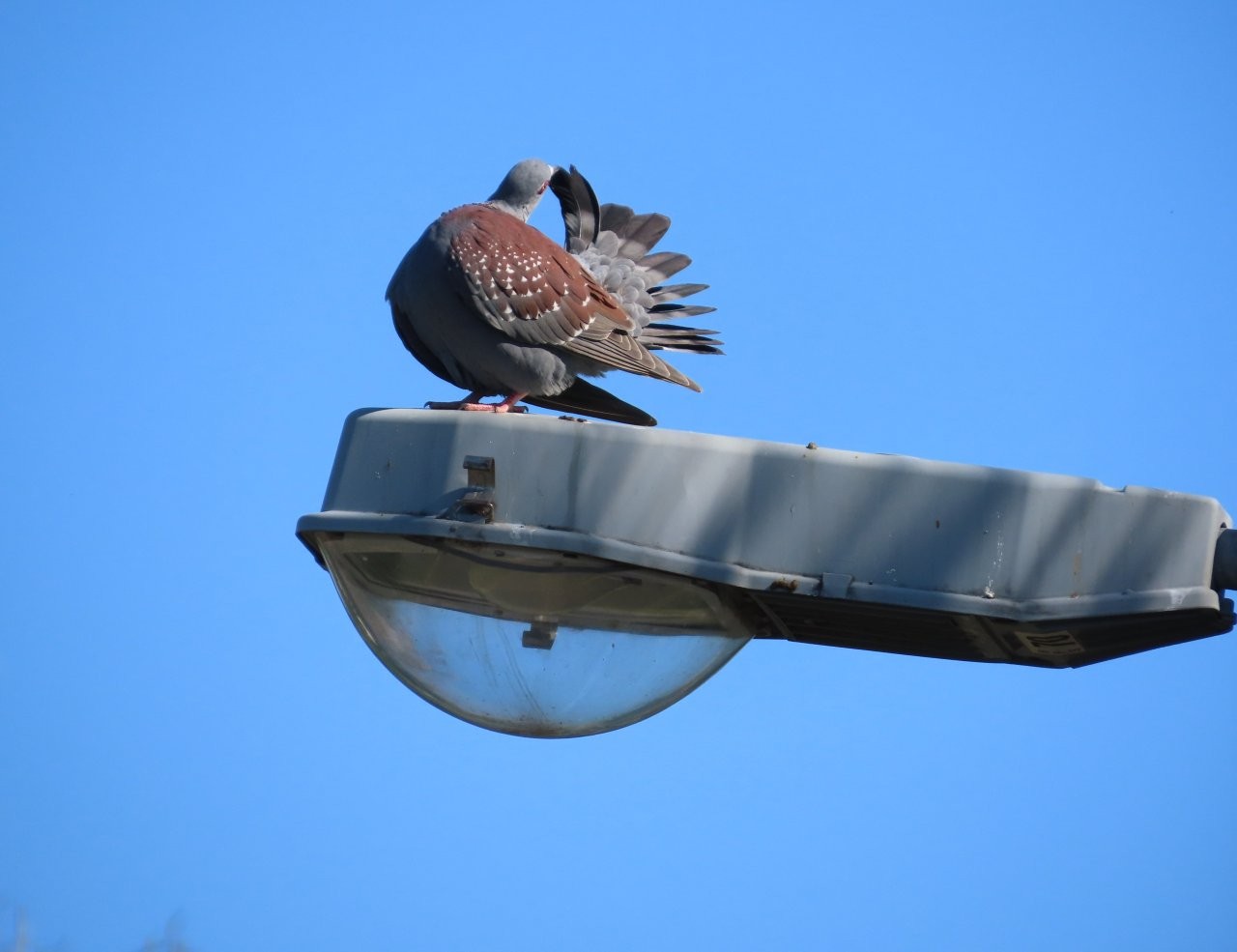...an idiom used to flip a coin at a sports event, but not in this case.

As in this case I shared some birds with their tails up.
So, there is an umpire with a coin in his hand then calls "Heads or Tails" to the opposing captains of two sports teams before they start a game. Depending on the choice of the captains' "Heads" or "Tails", the umpire will then flip the coin, and it will land on either the head, or tail, that means that the winning captain will have the choice to start or defend first.
Tails up came into my mind, when I saw some birds with their tails up and preening themselves. The one in the first picture is a Speckled pigeon, and more about him later in the post. As first I will show you a few other birds with their tails up. One is a little Laughing dove, and the other is a bigger Ringneck dove. So, come and see.
This little one is a Laughing Dove (Spilopelia senegalensis).
After it ate here in our front garden, it decided to oil its feathers.
This one is a bigger Red-eyed Dove (Streptopelia semitorquata.
And now I will show you the rest of the Speckled Pigeon (Columba guinea).
I whistled loudly and he gave me a look.
Then he started to stretch his wings, and I knew what was going to happen.
Simple, as he took off to go and preen somewhere else.
I have told you before that doves and pigeons, and other birds, have oil in a pod at their tail ends. It is called an Uropygial gland and let's see what Wikipedia has to say about it.
The uropygial gland, informally known as the preen gland or the oil gland, is a bilobed sebaceous gland possessed by the majority of birds used to distribute the gland's oil through the plumage by means of preening. It is located dorsally at the base of the tail (between the fourth caudal vertebra and the pygostyle) and is greatly variable in both shape and size. In some species, the opening of the gland has a small tuft of feathers to provide a wick for the preen oil.
If you visit the source above, then you will see that Wikipedia has a good example in a picture to show the location of the oil pot.
So, the doves dip their beaks into the oil pods and then proceed with their beaks to oil their tail feathers. They can also oil their wing and other feathers during preening in the same method. The birds oil their feathers during preening to keep them in good condition. And so, such is bird life.
I hope you enjoyed the pictures and the story.
Photos by Zac Smith. All-Rights-Reserved.
Camera: Canon PowershotSX70HS Bridge camera.
Thank you kindly for supporting this post.